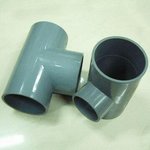06-1350/Class Notes for Tuesday October 10: Difference between revisions
No edit summary |
No edit summary |
||
| (5 intermediate revisions by the same user not shown) | |||
| Line 1: | Line 1: | ||
{{06-1350/Navigation}} |
{{06-1350/Navigation}} |
||
==Some Questions== |
|||
[[Image:PlasticTrinions.jpg|thumb|left|150px|Plastic trinions]] |
[[Image:PlasticTrinions.jpg|thumb|left|150px|Plastic trinions]] |
||
'''Question 1.''' Can you embed a trinion (a.k.a. a sphere with three holes, a pair of pants, or a band theta graph) in <math>{\mathbb R}^3</math> so that each boundary component would be unknotted yet each pair of boundary components would be knotted? How about, so that at least one pair of boundary components would be knotted? |
'''Question 1.''' Can you embed a trinion (a.k.a. a sphere with three holes, a pair of pants, or a band theta graph) in <math>{\mathbb R}^3</math> so that each boundary component would be unknotted yet each pair of boundary components would be knotted? How about, so that at least one pair of boundary components would be knotted? |
||
'''Dror's Speculation.''' Yes and yes. |
|||
| ⚫ | '''Question |
||
'''Question |
'''Question 2.''' A trinion <math>\gamma</math> is embedded in <math>{\mathbb R}^3</math> so that its boundary is the trivial 3-component link. Does it follow that <math>\gamma</math> is trivial? |
||
'''Dror's Speculation.''' No. |
|||
| ⚫ | '''Question 3.''' Suppose two trinions <math>\gamma_1</math> and <math>\gamma_2</math> are knotted so that the pushforwards <math>\gamma_{1\star}L</math> and <math>\gamma_{2\star}L</math> are equal for any link <math>L</math> which is "drawn" on the parameter space <math>\Gamma</math> of <math>\gamma_1</math> and <math>\gamma_2</math>. Does it follow that <math>\gamma_1</math> and <math>\gamma_2</math> are equivalent? |
||
'''Dror's Speculation.''' I'm clueless. |
|||
| ⚫ | |||
'''Question 4.''' A trinion <math>\gamma</math> is embedded in <math>{\mathbb R}^3</math> so that its "strapped boundary" is equivalent to the strapped boundary of the trivially embedded trinion. Does it follow that <math>\gamma</math> is trivial? |
'''Question 4.''' A trinion <math>\gamma</math> is embedded in <math>{\mathbb R}^3</math> so that its "strapped boundary" is equivalent to the strapped boundary of the trivially embedded trinion. Does it follow that <math>\gamma</math> is trivial? |
||
'''Dror's Speculation.''' If yes, it will have terrific consequences. If no, it will explain some of the misery we encounter when we deal with "associators". I would really like to understand this one. |
|||
| ⚫ | |||
Also see [[Some Questions About Trinions]]. |
|||
Latest revision as of 17:35, 12 October 2006
| ||||||||||||||||||||||||||||||||||||||||||||||||||||||
Some Questions
Question 1. Can you embed a trinion (a.k.a. a sphere with three holes, a pair of pants, or a band theta graph) in so that each boundary component would be unknotted yet each pair of boundary components would be knotted? How about, so that at least one pair of boundary components would be knotted?
Dror's Speculation. Yes and yes.
Question 2. A trinion is embedded in so that its boundary is the trivial 3-component link. Does it follow that Failed to parse (SVG (MathML can be enabled via browser plugin): Invalid response ("Math extension cannot connect to Restbase.") from server "https://wikimedia.org/api/rest_v1/":): {\displaystyle \gamma} is trivial?
Dror's Speculation. No.
Question 3. Suppose two trinions and are knotted so that the pushforwards and are equal for any link which is "drawn" on the parameter space of and . Does it follow that and are equivalent?
Dror's Speculation. I'm clueless.
Question 4. A trinion is embedded in so that its "strapped boundary" is equivalent to the strapped boundary of the trivially embedded trinion. Does it follow that is trivial?
Dror's Speculation. If yes, it will have terrific consequences. If no, it will explain some of the misery we encounter when we deal with "associators". I would really like to understand this one.
Also see Some Questions About Trinions.











